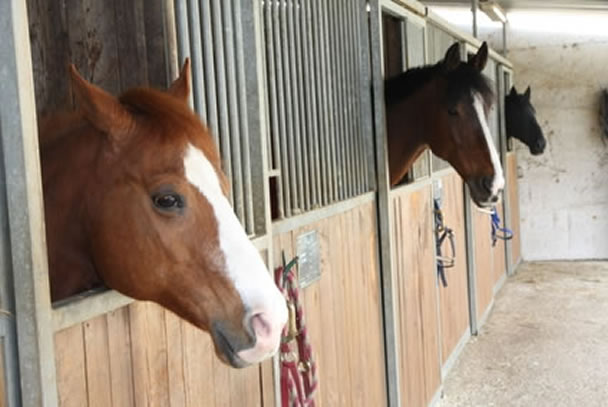How to choose a riding school

Whether you are an excited beginner or very experienced rider, it is often best to consider a few things when choosing a Riding School that meets your requirements.
These factors will help ensure you are able to ride within a safe environment and are getting value for money at a place that is best suited to your individual needs and requirements.
There are all too many horror stories out there where people have gone to non-reputable establishments, those that cut corners or are run by inexperienced or unqualified staff. This leads to the client being put off riding for life - or at the very worst case - resulting in serious injury.
Warning - High Risk Sport
Horseriding is a high-risk sport, and horses will always be unpredictable animals, so health and safety on and off the yard must always be paramount.
One way of ensuring that you are choosing a reputable establishment which has been assessed and inspected to meet certain standards, is to choose a riding school that has been approved by the BHS (British Horse Society) or ABRS (Association of British Riding Schools). These will normally be listed in the details about the riding school, or the appropriate badge will be displayed.
When you phone up to enquire about the riding school, it may also be a good idea to ask if you can arrange a convenient time to go and have a look at the stables or even watch as lesson. Doing so will give you a 'feel' for the place.
You will often be able to judge what kind of riding school it is, i.e. whether the horses are well cared for and whether health and safety is adhered to simply by being given a tour around the yard. For example, if horses are standing in muck-filled stables, tied up with no access to water and the riding school is noisy, untidy and with hazards left around the yard, then somewhere like this should be avoided.
Understandably, the riding school probably won't be immaculate, and there may be bits of straw or the occasional muck on the yard, but in general the atmosphere should be calm and relatively tidy. Riding schools can be very busy places - especially at weekends with lots of children around, so it is important that the yard is kept as hazard-free and calm as possible.
View a Typical Lesson
Viewing a lesson will also give you an insight into the sorts of horses used, group sizes and methods of tuition, so you can judge for yourself whether you like an instructor's way of teaching.
Although group sizes vary, between 3 and 8 is typical.
If you are considering lessons for a child who is a beginner, it is essential that the child is on the lead rein at first, to allow them to gain correct position and balance, and to learn the 'aids' to control the horse.
Another option is to begin learning to ride on a lunge line on a private lesson - this way the instructor stands in the middle of the arena holding a long lunge line, which attaches to the horse on a lunging cord. The horse walks in a circle, with the instructor taking control of the animal, enabling the rider to develop the correct position and balance in the different paces.
The lunge lesson is also a particularly effective method of teaching adult beginners to ride, and it is usually not long before an adult is able to begin to take control of the horse and the lunge line may be unclipped.
Choosing a Riding Instructor
When considering a riding instructor, it is also best to look for one that has passed their instructor's qualifications, and has the appropriate letters after their name.
For example, an instructor who is a BHSAI means a British Horse Society Assistant Instructor. Even though they are called an 'Assistant Instructor', they will have passed the relevant stage exams and are qualified to teach.
The next stage up from this is the BHSI Instructor. These instructors have passed further exams, they often have more experience of more technical practice, and usually charge more money for their services.
Even if you are an experienced rider, it is important to have an instructor accompanying you when riding new horses at a new place for the first time. Some establishments may allow clients they have never met before out by themselves uninstructed. However, although this may sound exciting, it is rather irresponsible for both horses and rider because if clients run into difficulties while out with horses, there is no one to offer assistance.
Have Fun!
Although there may seen many safety factors to consider while choosing a riding school, it is still important to have fun! As long as there is a balance between the two, you will be fine.
So wherever you choose to ride, good luck, stay safe and have fun!
Add your comments
comments powered by Disqus
